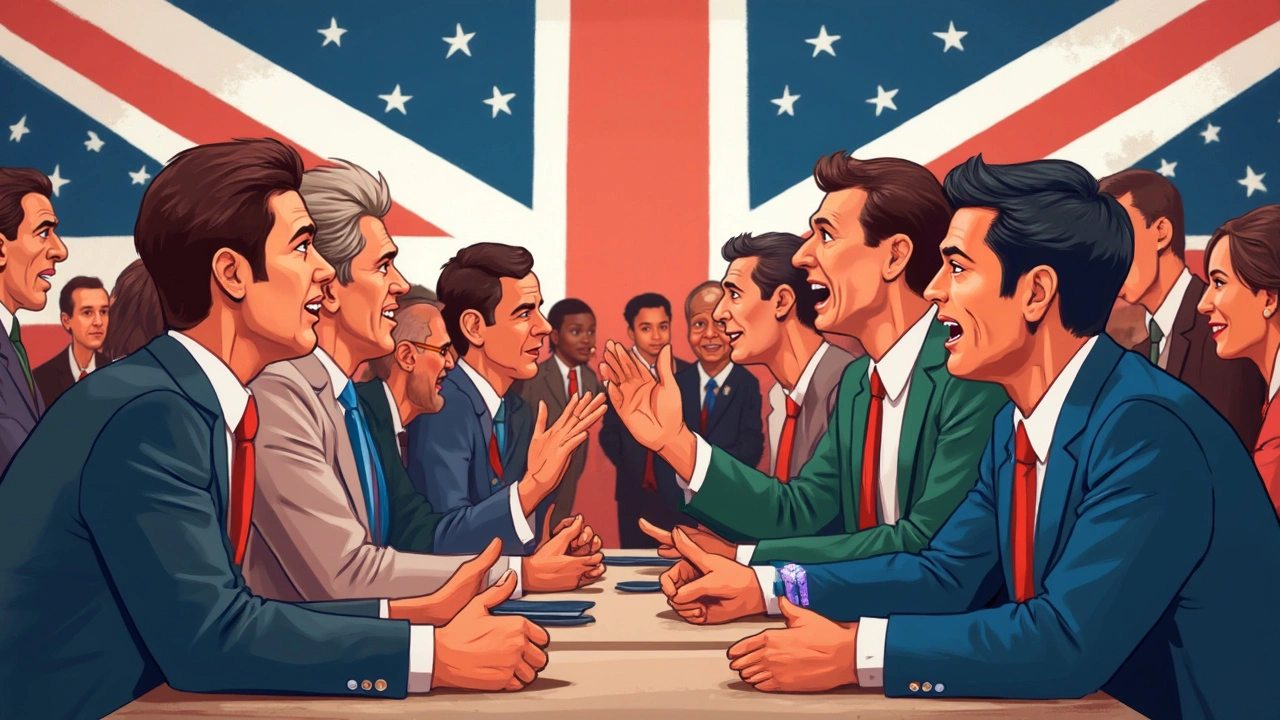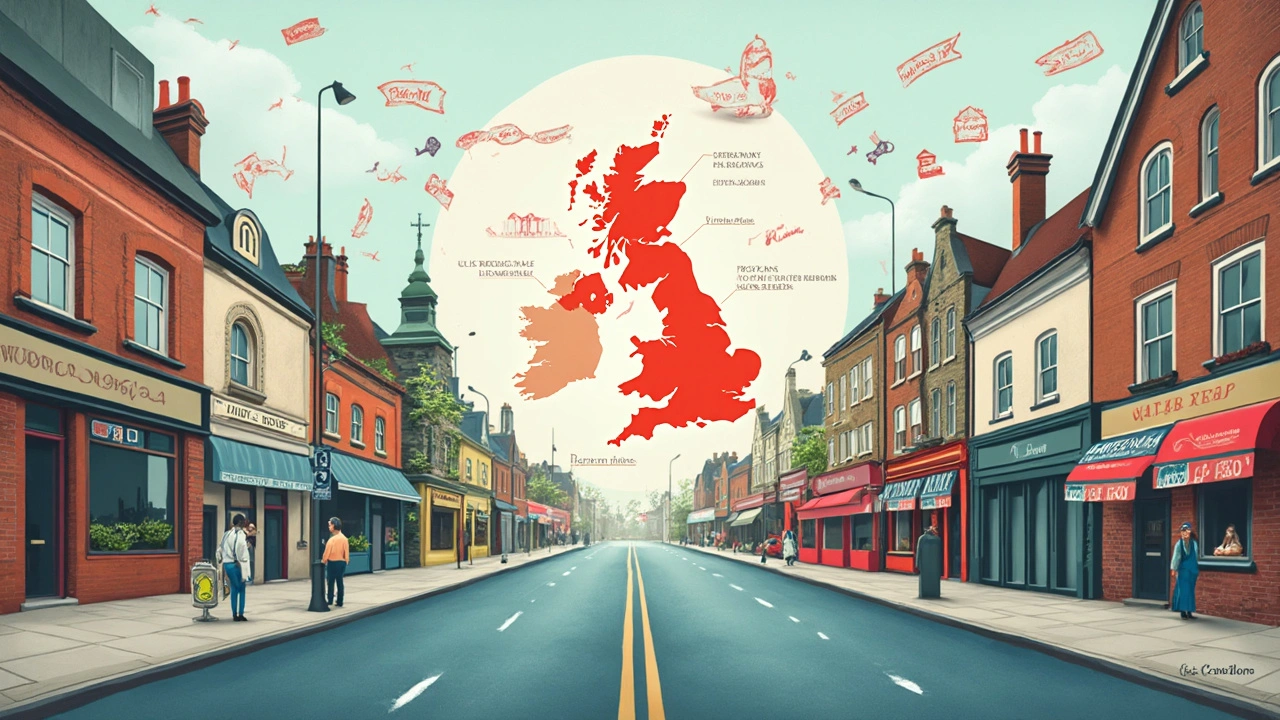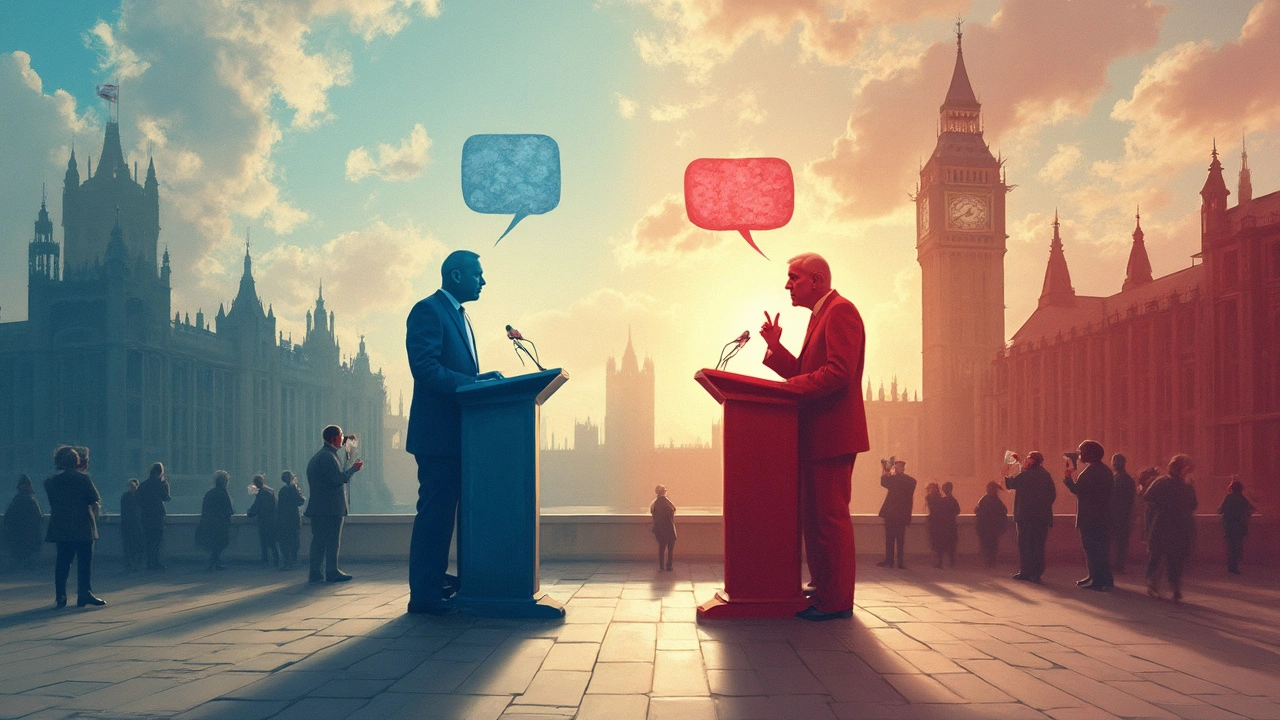
Confused about whether Republicans are left or right-wing? You’re definitely not alone. Every time a big political story breaks, someone on social media argues the labels. But if you look past the shouting, figuring this out is much easier than it seems.
First up, the basics: in politics, 'right-wing' means you prefer tradition, individual freedom, smaller government, and less regulation. 'Left-wing,' on the other hand, tends to mean you support more government action, bigger safety nets, and progressive social changes. These aren’t just buzzwords—they actually shape real laws and policies that affect your life.
So, where do Republicans fit in? They’re pretty solidly right-wing, at least by American standards. They're into lower taxes, less government spending, and stricter immigration rules. Still, lots of folks get these terms mixed up, especially if they're looking at UK politics, where 'Conservative' and 'Labour' don’t line up exactly with their US counterparts. Don't let all the party names and slogans trip you up—it's what they stand for that really matters.
- Where 'Left' and 'Right-Wing' Come From
- What Republicans Stand For
- Easy Signs to Spot Left or Right-Wing Ideas
- Why People Mix Up These Labels
- UK Perspective: How Does This Compare?
Where 'Left' and 'Right-Wing' Come From
The whole left-wing vs. right-wing thing isn’t just internet slang—it started way back in 1789. During the French Revolution, people in the National Assembly had to pick a side. Those who wanted more equality and big changes (like ending the king’s rule) sat on the left. People who liked the old way of doing things—keeping the king, the church, and tradition—sat on the right. This basic split stuck around, and now we use these labels all over the world.
Now, what does this actually mean for politics now? Here’s a simple breakdown of what each side has usually stood for over the years:
- Right-wing: Traditional values, smaller government, lower taxes, free markets, and a strong focus on individual responsibility.
- Left-wing: More government support (like welfare and public healthcare), social equality, and progressive changes in laws and culture.
You’ll run into a lot of noise about what these words mean, but if you focus on policies, the difference becomes clear. For example, an interesting 2022 poll from Pew Research showed 73% of Americans who identify as conservative (right-wing) said government is doing too much, while only 15% of liberals (left-wing) agreed with that idea.
| Term | Stands For | Common Policies |
|---|---|---|
| Left-Wing | Change, equality | Universal healthcare, higher taxes for rich, strong worker protections |
| Right-Wing | Tradition, individual freedom | Lower taxes, limited welfare, tough immigration policies |
These labels aren’t perfect, but they give you a handy shortcut. If you’re ever stuck, just ask: Does this group want to shake things up for fairness, or keep things as they are for stability? That’s often the real divide.
What Republicans Stand For
If you hear the word "Republican," think right-wing. At their core, Republicans in the US stick to conservative ideas, meaning they want to keep things the way they are, trust individuals more than government, and push for less interference from officials in your day-to-day life. These are not just campaign buzzwords—you see it in the laws and stances on big issues.
One thing that stands out is their take on taxes. The Republican Party is famous for trying to lower taxes for individuals and businesses. Their big idea is: people spend their own money better than government does. They believe that when businesses keep more of their earnings, they hire more people. It's a "free market" approach: let supply and demand do its thing, without tons of rules from above.
Another biggie is spending. Republicans talk a lot about cutting government spending and reducing the national debt. They point out that too much government spending leads to higher debt, future tax hikes, and less freedom for the average person. This is why you often see them pushing for smaller government—fewer departments, less bureaucracy, and more power going back to states instead of Washington D.C.
- Republican policy usually backs stricter immigration rules, arguing this keeps borders secure and protects local jobs.
- They support the Second Amendment, which means they're generally against stricter gun control laws. The idea is that responsible citizens should have the right to protect themselves.
- Socially, Republicans tend to prefer traditional values. You'll see them talk about family, religion, and sometimes take stances against things like abortion and for religious freedoms.
It's important to note, though, not all Republicans agree on every issue. The party has its own fights between traditional hard-liners and newer, more moderate voices. But when it comes down to major national laws or big debates, they're usually on the same page—less government, more personal choice, and sticking with what they believe made America strong in the first place.

Easy Signs to Spot Left or Right-Wing Ideas
Deciding if a policy or person is left or right-wing doesn’t need a political science degree. There are some quick signs that make things clear—especially when you’re trying to figure out where the Republican party fits.
- If someone talks about lower taxes, shrinking government programs, or cutting regulations for businesses, that’s usually right-wing.
- Push for higher taxes on the rich, bigger welfare programs, and government-run healthcare? That’s typically left-wing.
- On social issues, right-wing folks often want tougher immigration laws and prefer traditional values around topics like marriage and education. Left-wing people push for more immigrant rights, support LGBTQ+ laws, and tend to want schools to teach things like climate change and diversity.
- Gun control can be a giveaway: the right usually wants fewer restrictions on guns, left-wingers call for tighter gun laws.
Here’s a cheat sheet showing classic positions:
| Issue | Left-Wing | Right-Wing |
|---|---|---|
| Taxes | Raise, especially on wealthy | Lower, for all or most |
| Healthcare | Government-run or expanded | Private market, less government |
| Immigration | Pathways to citizenship, fewer restrictions | Tighter borders, more enforcement |
| Climate Policy | Aggressive action, more rules | Focus on economy, fewer regs |
| Guns | Stricter laws | Less regulation |
It gets tricky because not everyone fits perfectly into one box. Some people pick and mix—maybe they’re right-wing on money but left-wing on social stuff. But if you follow the money, rules, and rights topics, spotting the sides gets much easier.
Why People Mix Up These Labels
This stuff gets messy, fast. People aren’t just mixing up 'left' and 'right' for fun—it’s a recipe straight from history and the way news is shared these days.
First off, words like 'liberal', 'conservative', and even Republican can mean different things depending on which country you’re talking about or even which decade. In the UK, 'liberal' used to mean the party that wanted more freedom from government. In the US, 'liberal' means almost the opposite—it’s all about government getting more involved to give people support. Easy to see why people scratch their heads.
Media plays a giant role. Every channel, website, or paper wants your attention, so headlines often throw 'left' and 'right' around without explaining what’s actually meant. Social media turbocharges confusion. Most tweets and TikToks skip the boring details, which means people pick up labels that sound right but don’t fit the facts.
Party platforms also shift over time. In the US, the Republican Party was actually the anti-slavery party way back in the 1860s. In the 1960s, both major parties in the States changed their platforms a lot. Even experts sometimes mix up the old and new versions of parties when arguing about today’s issues.
Here’s a quick table that shows how political terms get mixed up between the US and UK:
| Term | US Meaning | UK Meaning |
|---|---|---|
| Liberal | Left-wing, pro-government programs | Classical freedom, often smaller government |
| Conservative | Right-wing, smaller government | Traditional, but can support NHS (big government health service) |
| Republican | Right-wing party | N/A (No Republican Party in UK) |
So, next time someone throws a label around, check what country and era they’re talking about. Context is everything, and politics loves to keep moving the goalposts.

UK Perspective: How Does This Compare?
If you live in the UK, it’s easy to get mixed up when folks in the news talk about left and right-wing politics, especially when they mention American parties. The Republican Party in the US is right-wing, but how does that stack up against British choices?
In the UK, the Conservatives (also called the Tories) are the right-leaning party, sort of like the Republicans in the States. They back lower taxes, a strong national identity, and less government control over business. Labour, meanwhile, is closer to the left—backing things like public healthcare and bigger spending on social programmes. But it gets murky: even the farthest right major UK party doesn’t push for totally slashing healthcare like some Republicans have argued in the US.
- Conservatives: Right-leaning, big on free markets, less government spending on welfare.
- Labour: Left-leaning, supports NHS funding, higher taxes on the rich, more social programmes.
Here’s a quick side-by-side so you can see the similarities and gaps:
| US Republicans | UK Conservatives | UK Labour | |
|---|---|---|---|
| Taxes | Lower taxes, especially for business and high earners | Lower taxes, but often less aggressive than US Republicans | Higher taxes on the wealthy |
| Healthcare | Privatise, less federal control | Support NHS but open to private options | Strong support for NHS, more public spending |
| Immigration | Tougher rules, focus on border control | Tougher but with EU influences pre-Brexit | More open, support for refugees |
| Social Issues | Conservative views, less change | Moderate, slowly changing over time | Progressive, more rapid change |
One weird thing: many Americans think 'conservative' means exactly the same thing everywhere, but UK Conservatives are less hardline on things like healthcare and religion in politics. Meanwhile, Americans see Socialism as a big left-wing word, but Brits don’t blink an eye at public hospitals or national railways—they’re just part of life.
If you’re watching US elections from the UK, remember: when people argue over left and right, they’re not always talking about the exact same ideas as British parties. Knowing these key differences can spare you a lot of confusion when political stories cross the pond.